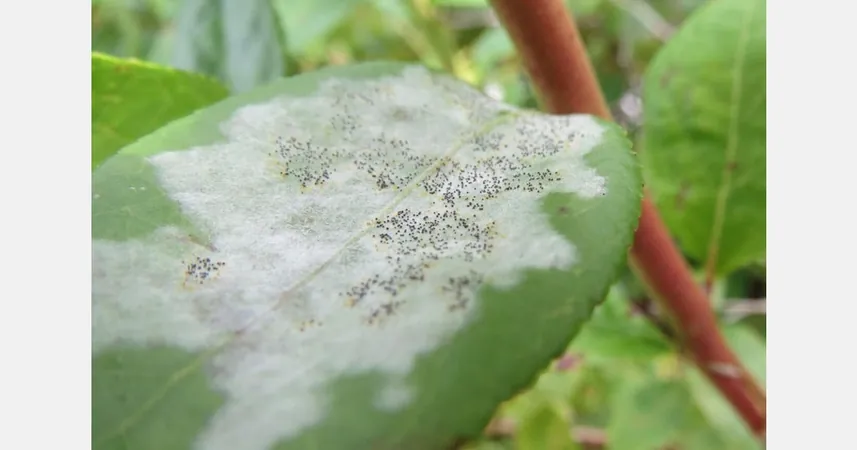
The Alarming Global Spread of Powdery Mildew in Blueberries: What You Need to Know
2025-01-09
Author: Benjamin
Introduction
A recent study led by Bradshaw and his team has unveiled critical insights into the global spread and economic impact of powdery mildew in blueberries, a fungal disease that threatens blueberry crops around the world.
Key Findings
This comprehensive analysis examined a collection of 173 plant leaf samples plagued by powdery mildew, spanning across North America, Europe, Africa, and Asia. Among these samples, one notable specimen was collected from a North American herbarium over 150 years ago, while all foreign samples were gathered within the past five years.
Geographic Spread of the Disease
The researchers discovered that powdery mildew was first detected outside North America on a farm in Portugal in 2012. This alarming finding, noted by one co-author who previously worked for a major berry company, indicates that the disease's invasive nature is a growing concern for blueberry farmers globally.
Origins and Drivers of Spread
The study confirmed that the fungus, E. vaccinii, originated in the eastern United States and spread through two distinct global introductions. One strain made its way to China, Mexico, and California, while another was identified in Morocco, Peru, and Portugal. Human activities, particularly the transportation of nursery plants, were implicated as the primary driver for this alarming spread.
Reproductive Strategies
Interestingly, the study highlighted a significant difference in reproductive strategies of the E. vaccinii fungus. While the fungus reproduces both sexually and asexually in the United States, findings reveal that strains found in other countries primarily reproduce only asexually. This variation in reproduction methods could influence the management and control strategies farmers may employ.
Economic Impact
What's even more staggering is the estimated economic impact of powdery mildew on the global blueberry industry, which ranges from $47 million to a staggering $530 million annually. This figure accounts for the costs related to fungicide applications aimed at preventing or mitigating the disease's spread.
Regions at Risk
The research also serves as a crucial warning for key blueberry-growing regions, particularly the U.S. Pacific Northwest, where conditions are conducive to the establishment of powdery mildew. Bradshaw cautioned that while the disease has not yet invaded these areas, the agricultural conditions could greatly influence its spread.
Management Practices
For instance, blueberry farms that utilize tunnel systems reported worse outcomes than those that grow their crops outdoors, highlighting the need for tailored management practices.
Innovative Tools for Farmers
Moreover, the study introduced an innovative tool developed at North Carolina State University, co-authored by Ignazio Carbone. This public database allows farmers to input their data and identify specific strains of the E. vaccinii fungus present in their fields.
Conclusion
The findings of this study underscore the urgent need for proactive measures in the blueberry industry to combat the growing threat posed by powdery mildew. As climate change and global trade continue to shape agricultural landscapes, the stakes have never been higher for farmers worldwide. Are they prepared to face this looming agricultural crisis?



 Brasil (PT)
Brasil (PT)
 Canada (EN)
Canada (EN)
 Chile (ES)
Chile (ES)
 Česko (CS)
Česko (CS)
 대한민국 (KO)
대한민국 (KO)
 España (ES)
España (ES)
 France (FR)
France (FR)
 Hong Kong (EN)
Hong Kong (EN)
 Italia (IT)
Italia (IT)
 日本 (JA)
日本 (JA)
 Magyarország (HU)
Magyarország (HU)
 Norge (NO)
Norge (NO)
 Polska (PL)
Polska (PL)
 Schweiz (DE)
Schweiz (DE)
 Singapore (EN)
Singapore (EN)
 Sverige (SV)
Sverige (SV)
 Suomi (FI)
Suomi (FI)
 Türkiye (TR)
Türkiye (TR)
 الإمارات العربية المتحدة (AR)
الإمارات العربية المتحدة (AR)